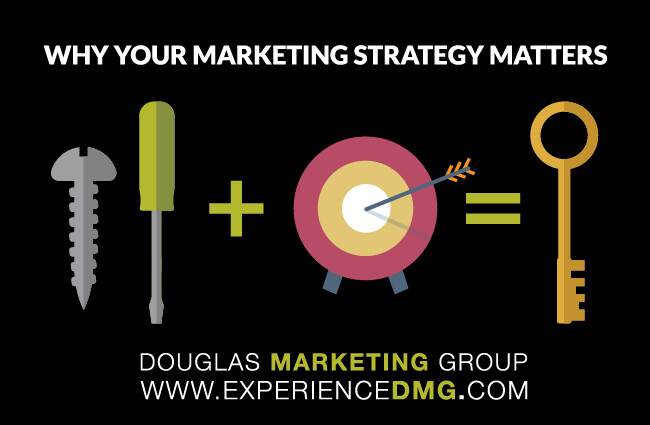If I were to ask you to build a cabinet (don’t worry… I won’t), but only gave you a screwdriver. Could you do it? Of course not. You would need wood, screws, probably some sand paper… (Full disclosure: I’m only guessing here. I’ve never built a cabinet in my life, but you get the idea).
Think of your marketing strategy as your tool kit. How could you possibly reach your end-goal without one? As a result, you’ll either end up throwing lots of money at different ideas in hopes of one sticking, or zero-in on a few specific ideas that don’t result in anything. Even if something works, how do you know you actually got ROI from your efforts? You won’t, and chances are you’ll end up feeling frustrated and ripped-off.
For example, good content isn’t the only thing necessary to drive results for your website. Similarly, setting up a social media page and posting on it won’t necessarily generate awareness for your business. You need to look at your target audience (first, make sure you know who that is!), identify what marketing channels they pay attention to, and ensure you are using messaging that speaks to their motivations and interests.
But remember, you can’t just set it and forget it! For the best results, you have to monitor, track and adjust your marketing as you go. Beyond that, you need a solid team on the other end who’s handling incoming sales and customer service.
All the marketing in the world isn’t going to result in sales if you don’t follow up with good customer service. Trust me, it’s key.
Finally, having a clear goal with measurable metrics is imperative to your strategy. If you’re a good cabinet-maker, it’s not just about the tools you have in-hand; it’s also about the practices you use to build your final piece. Your process depends on your end-goal. To determine your best marketing practices, your strategy must outline your goals and what you want to achieve in the end.



